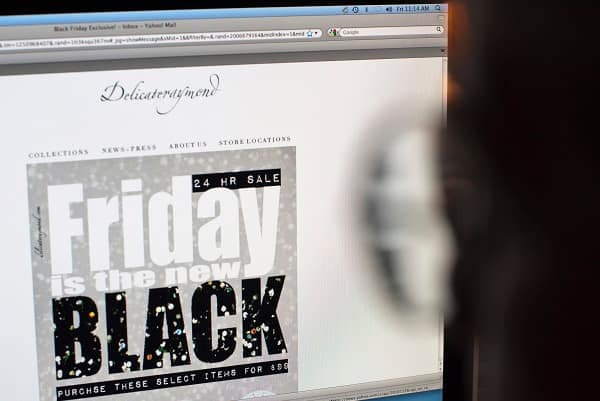Email marketing is fast becoming one of the most effective channels through which to conduct digital communication. Indeed, against other marketing channels, it still represents one of the highest returns on investment. The Data & Marketing Association says businesses can, on average, expect a return of $42 for every dollar invested in email marketing. However, considering that inboxes have become very crowded these days, generic email blasts do not easily attract much attention. Personalisation has been a very strong way to cut through the clutter. Businesses can significantly enhance engagement, boost conversions, and foster closer relationships with their customers if the email content is matched with the preferences and behaviours of the receivers. In this blog, we’ll discuss the role of personalisation in email marketing and how one can leverage it to drive maximum impact.
What is personalisation in email marketing?
Personalisation in email marketing involves changing the content of emails based on a recipient’s information and behaviour. This includes not only when the recipient is being addressed by first name but also adapting the content concerning their interests, past interactions, and purchase behaviour. Effective personalisation can make the experience of the receiver relevant and engaging, hence driving higher open rates, click-through rates, and conversions.
Why personalisation matters
1. It enhances relevance
Personalised email is more relevant to the receiver compared to others. If the email reflects their interests and needs, then it will capture their attention to a great extent and result in action. For example, if a customer has bought running shoes, he may appreciate an email regarding new offerings in athletic gear or exclusive discounts on related products. It’s also important to use a professional email address to send your emails.
2. Builds stronger relationships
Personalisation helps to establish a closer and much stronger connection between a brand and its target. By recognising the target’s preferences and previous behaviour, the brand is communicating to the target that it cares about them as a person. This creates a sense of trust and loyalty, driving customers to further open emails and make repeat purchases.
3. Greater engagements
Emails relevant to a recipient’s interests and behaviour are most likely to get opened and generate action. Strategies of personalisation—dynamic content, product recommendations, targeted offers—are likelier to raise engagement metrics like open rates and click-through rates.
4. Drives conversions
It has been shown that personalised emails guarantee greater conversion rates than non-personalised ones. On the other hand, because relevant offers and content can be offered within them, personalised emails make sure to do a better job at moving recipients through the sales funnel. For instance, sending a follow-up email with a discount code to a user who has abandoned her cart might recover some probably lost sales.
Key strategies for email personalisation
1. Segment your audience
Effective personalisation achieves audience segmentation. You can segment your email list into small subgroups based on a lead’s demographic information, purchase history, and level of engagement, hence creating messages most relevant to each segment. For instance, you can have new subscriber campaigns, frequent buyer campaigns, and dormant customer campaigns.
2. Behavioural data
Behavioural data allows you to track activities on your brand by the target, whether through their browsing history, purchase behaviour, and/or email engagement. Use this information to create relevant and real-time email content. Suppose a customer frequently browses through any specific category of product; you can send out personalised recommendations concerning that category.
3. Dynamic content
Dynamic content allows different blocks of content to be shown that is driven by a single e-mail, based on attributes or behaviour of a recipient. This might include product recommendations that are relevant and personal to the customer, location-based offers, or specially created content based on past interactions. Dynamic content ensures that every recipient sees an email that is speaking directly to them.
4. Personalise subject lines and preheaders
The two most important things that will ensure an open from the recipient are the subject line and the preheader text. Customise them by using the recipient’s name, location, or any other past behaviour. For example, a subject line like “Sarah, Here’s 20% Off Your Favorite Brands!” is way more engaging than some generic offer.
5. Triggered emails
These are automatic emails that get triggered by any actions or events. Examples include welcome emails, abandoned cart reminders, and post-purchase follow-ups. They are greatly personalised since they get created based on the person’s actions to whom they are sent, so they are relevant and timely.
6. Use personalised recommendations
Product recommendations, whether based on past purchases or browsing history, can hugely improve the relevance of your emails. Either through recommendation algorithms or tools, recommend products that are likely to be of interest to the recipient. This will improve the chances of purchase and also give them a feeling that you know their tastes.
Examples of effective email personalisation
1. Welcome emails
A well-crafted welcome email sets the tone for future interactions. Add a personal touch by using the recipient’s name and customising the content according to their interests or the source of sign-up. For instance, if they signed up for your newsletter after downloading your guide to digital marketing, it might be relevant to include links to some other related resources or offer a discount on marketing tools.
2. Abandoned cart emails
The abandoned cart mails are fruitful if they are personalised. It gives them details about the products left in their cart and provides them with incentives like offering a discount or free shipping, thus motivating the customers to complete the purchase. Personalised reminders will contain images of the abandoned products accompanied by a call-to-action to highlight the urgency to complete a purchase.
3. Product recommendations
Send out personalised product recommendations based on past purchases or browsing history. For instance, if they purchased a camera from your shop, you could nurture them through emails offering camera accessories, photography courses, or other related products they may be interested in.
4. Re-engagement campaigns
Re-engagement campaigns are for waking up sleeping subscribers. Make these emails even more personal by referring back to their prior activities and providing them with some incentives to come back. At the end, for example, send an exclusive offer or showcase new content in line with their past interests.
Measuring the impact of personalisation
Track key metrics, like open rates, click-through rates, conversion rates, and overall engagement, in order to evaluate the effectiveness of your personalisation efforts. Conduct A/B tests that run emails with and without personalisation to demonstrate how performance is impacted. Analysis of such metrics shall help in tuning strategies and making email marketing campaigns more effective.
Best practices for personalisation
1. Respect privacy
Be sure to have your personalisation in line with data protection and respect recipients’ choices about privacy. Get clear consent to gather and process personal data, provide methods for recipients to either preference-manage or opt-out of all personalisation.
2. Stay relevant
While personalisation is powerful, it’s important to make sure that what goes around it is germane and adds value to the receiver. Be cautious of over-personalising e-mails with too much personalisation, which may seem intrusive or insincere.
3. Test and iterate
Run continuous tests of various personalisation strategies and their impact on engagement and conversions. Improve your approach on a continuous basis by learning from your tests and staying responsive to changing customer preferences and behaviours.
4. Use personalisation responsibly
Be very careful not to step into the realm of over-personalisation or induction of the intrusive feeling while using personalisation. Personalisation shall be used in such a way that it respects the receivers and their choices and preferences.
Elevating email personalisation with advanced tools
For businesses looking to leverage the power of email marketing, Klaviyo stands out as a leading platform that simplifies and enhances the personalisation process. Klaviyo email marketing allows businesses to create highly targeted and dynamic email campaigns with ease. Its advanced segmentation tools enable marketers to tailor messages based on detailed customer data, including past behaviours, purchase history, and engagement levels. Klaviyo’s intuitive interface and pre-built templates make it straightforward to design personalised emails that resonate with individual recipients. Additionally, the platform’s powerful analytics provide actionable insights into campaign performance, allowing businesses to continuously refine their strategies for optimal results. With Klaviyo, businesses can not only implement effective personalisation but also scale their email marketing efforts efficiently, ensuring a higher return on investment and more meaningful customer connections.
Harnessing the power of personalisation for better email marketing results
Personalisation in emails is more of a need than a luxury if you want higher engagement, better customer relationships, and, finally, driving conversions. Use behavioural data, segment your audience, and put in dynamic content to drive the most relevant and compelling email experiences possible for your recipients. As you now move into putting some personalisation in your email marketing approach, keep measuring your results, testing different methods, and learning new ways to stay ahead in the digital environment. Make personalisation one of the major drivers of email marketing success, and unlock its power in connecting with your target audience at a deeper level.






Leave a Comment